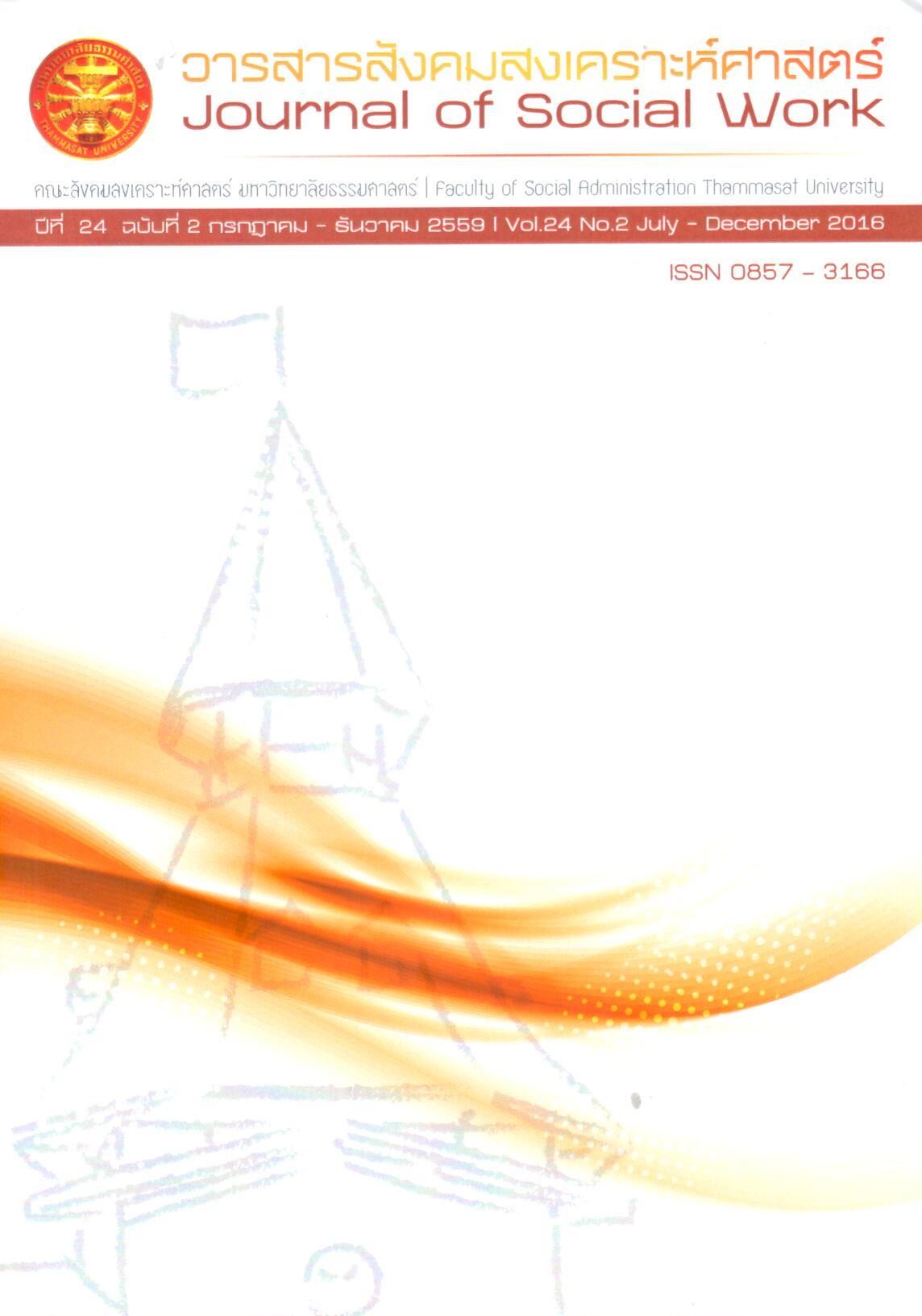Quality of Life Promotion for Elderly Prisoners
Keywords:
Quality of life promotion, Elderly prisonersAbstract
The objective of the research “Quality of life promotion for elderly prisoners” is to study the patterns of living of elderly inmates while serving the sentence and subsequently acquitted. The research thrives to understand the factors that supports the betterment of quality of living for elderly inmates and to study the measures in the improvement of quality of living for elderly inmates in order to return to the society. The research focuses on both qualitative and quantitative study. The sampling includes elderly inmates with the age of 60 or above serving their sentences in prisons within the area of Bangkok. The elderly inmates’ quality of life was closely through the indicator set by World Health Organization (WHO) which is called WHOQOL-100.
The results indicated that elders with low social status are susceptive to commit crime(s) and later on live their life serving their sentences in confinement. Other factors that are observed in predisposed elderly convicts were the fact that they only receive primary education level, and an income per capita of 10,000 baht per month or less. Most committed crimes relating to drugs. It could be easily explained that they are motivated by the desire to become wealthy and the pressure from hardships economic. Furthermore, their actions could be elucidated by their ignorance. In addition, some elderly inmates encountered many life hardship such as poor health condition and the lack of ability and availability to seek medical attention, poor living environment and economic environment, and the minimal of reliant upon the Doctrine of Faith to help guide their lifestyle. The problematic issues that most elderly inmates in the sampling group confronted includes health issues, mental health issues, freedom, and the environment they are exposed to in the prisons. The issues that were seen in elderly inmates after release consist of issues relating to health and mental health, issues of their living environment, economic environment, and the issues of relationship with other people in the society.
Factors that are corresponding to the betterment of the quality of living for elderly inmates incorporate the amelioration and provision of support for elders with low social status. The support should prioritize those who are experiencing economic hardship. It also should vigorously stride to alleviate mental health issues. These improvements could be accomplished through the usage of the Doctrine of Faith or other religious activities. Furthermore, organizations should work in correlation with elderly inmates who have long term imprisonment. This is significant because those elderly inmates would most likely need help and support after being released.
References
นัทธี จิตสว่าง. (2541). หลักทัณฑวิทยา. กรุงเทพมหานคร: โรงพิมพ์ราชทัณฑ์.
ปภัศร ชัยวัฒน์และคณะ.(2556). การวิเคราะห์ความสัมพันธ์ระหว่างการเปลี่ยนแปลงโครงสร้างประชากรกับความเหลื่อมล้ำทางรายได้ในประเทศ.[Online]. Available: https://www.google.co.th. (retrieved : Dec 25,2013)
ศศิพัฒน์ ยอดเพชร. 2550. ศูนย์อเนกประสงค์สำหรับผู้สูงอายุในชุมชน : กลไกการดาเนินงานเพื่อความยั่งยืน. กรุงเทพมหานคร : มิสเตอร์ก๊อปปี้ (ประเทศไทย) จากัด.
สุพัตรา สุภาพ. (2536). สังคมและวัฒนธรรมไทย ค่านิยม : ครอบครัว : ประเพณี. กรุงเทพฯ : โรงพิมพ์ไทยวัฒนาพานิช จำกัด.
สำนักส่งเสริมและพิทักษ์ผู้สูงอายุ.(2552). “สิทธิของผู้สูงอายุตามหลักการขององค์การสหประชาชาติ” [Online],available www.oppo.opp.go.th/info/laws_right. htm (retrieved : December 22, 2012)
อัณณพ ชูบำรุง. (2527). ทฤษฎีอาชญาวิทยา. กรุงเทพฯ : สำนักพิมพ์โอเดียนสโตร์.
Elaine Crawley and Richard Sparks. (2006). Is there life after imprisonment? How elderly men talk about imprisonment and release. [Online]. Available: https://www.sagepub.com/prccj3/overviews/pdfs/Crawley .pdf (retrieved : June 24, 2014)
Gregory, Derek; Johnston, Ron; Pratt, Geraldine; Watts, Michael; Whatmore, Sarah, eds. (2009). "Quality of Life". Dictionary of Human Geography (5th ed.). Oxford: Wiley-Blackwell.
KiDeuk Kim and Bryce Peterson. (2014). Aging Behind Bars: Trends and Implications of Graying Prisoners in the Federal Prison System Urban Institute. [Online],available https://www.urban.org/sites/default/files/ alfresco/publication-pdfs/413222-Aging-Behind-Bars-Trends-and-Implications-of-Graying-Prisoners-in-the-Federal-Prison-System.PDF (retrieved : August 4, 2016)
Sharma R.C (1975). The Meaning of Quality of life. In.R.C.Sharmar
Senior J. et al., (2013). Health and social care services for older male adults in prison: the identification of current service provision and piloting of an assessment and care planning model. [Online]. Available: https:// www.journalslibrary.nihr.ac.uk/hsdr/volume-1/issue-5(retrieved : June 25, 2014)
World Health Organization (1997). WHOQOL : MEASURING QUALITY OF LIFE. [Online]. Available: https://www.who.int/mental_health/media/68.pdf (retrieved : June 25, 2014)
Downloads
Published
How to Cite
Issue
Section
License
The manuscripts published in the Social Work Journal is the copyright of the Social Work Journal, Thammasat University
Any article or opinion appeared in the Social Work Journal will solely be under the responsibility of the author The Faculty of Social Administration, Thammasat University and the editors do not need to reach in agreement or hold any responsibility.



